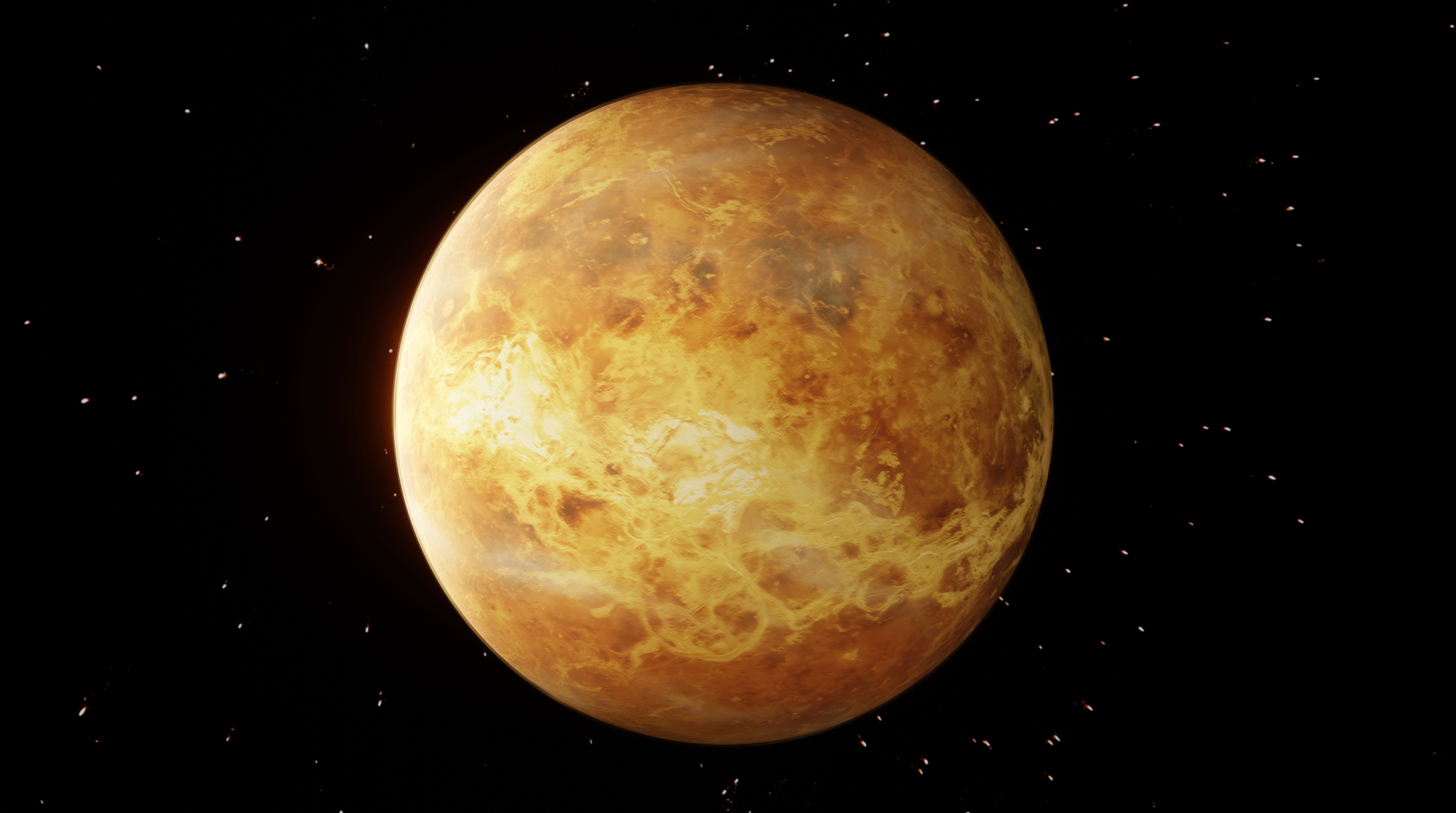The moon will meet up with Venus, the solar system's hottest planet and the second closest to the sun, in the sky on Tuesday (May 23). The two celestial objects will make a close approach with the waxing crescent moon, passing 2⁰ 12' to the north of the scorching hot planet.
At around the same time as the close approach, the moon and Venus will share a right ascension in an arrangement astronomers call a conjunction. Both the 4-day-old moon and Venus will be in the constellation of Gemini during the conjunction.
According to In the Sky, skywatchers in New York City will be able to see the moon and Venus shortly after the pairing rises at 8:26 a.m. EDT (1226 GMT) until just before they drop just below the horizon at around 11:44 p.m. EDT (0344 GMT). Mars will also be close by, appearing just above the moon.
If conditions aren't right in your area to view this celestial pairing, no need to fret: The Virtual Telescope Project will host a telescope livestream of the conjunction of Venus and the moon beginning at 4 p.m. EDT (2000 GMT) on Tuesday (May 23). The livestream will be available on the project's website or YouTube channel.
Related: Night sky, May 2023: What you can see tonight [maps]

Both celestial objects will have a right ascension (celestial equivalent of longitude) of 07h13m50s, while the moon will have a declination (celestial equivalent of latitude ) of +27°22', and Venus will have a declination of +25°09'.
Just four days have passed since the moon was completely dark during its new moon phase, so the lunar face will only be around 17% illuminated during the conjunction with Venus. The moon will have a magnitude of -10.4, while Venus will have a magnitude of -4.2, with the minus prefix indicating a particularly bright object over Earth.

Because the sun will be over the horizon at the exact time of the conjunction, located in the constellation of Taurus, 44 degrees away from the moon and Venus, astronomers making daytime observations should take particular care when observing this conjunction not to look directly at the sun. Nevertheless, the moon and Venus will remain together in the night sky on Tuesday even after the moment of exact conjunction.
Though the moon and Venus are technically sharing a close approach during the conjunction, they will still be too widely separated to fit together in the field of view of a telescope. The two celestial bodies can be seen together in the wider field of view of binoculars, however.
Of course, despite making a close approach in the sky over Earth, the moon and Venus remain fairly widely separated in the actual solar system. And this is probably a good thing.
While Venus is often referred to as Earth's "evil twin" and is the closest solar system planet to ours, named after the Roman Goddess of love, the second planet from the sun has anything but a hospitable and welcoming environment.

In fact, despite not being as close to the sun as Mercury, Venus is the hottest planet in the solar system, with a hellish temperature at its surface is around 900 degrees Fahrenheit (475 degrees Celsius), hot enough to melt lead. The planet's heat is thanks to its thick toxic atmosphere filled with carbon dioxide and punctuated by clouds of sulfuric acid, which traps heat and drives a runaway greenhouse effect.
And the nightmarish environment of Venus extends beyond temperature. The pressure at the surface of the planet is a crushing 90 times greater than that experienced at the surface of Earth. In fact, it is around that which would be experienced about a mile below the ocean of Earth.
Scientists currently believe that the surface of Venus is punctuated by volcanoes, something that will be investigated by NASA's DAVINCI spacecraft, set to launch in the late 2020s.
DAVINCI will investigate the cloud tops of Venus before dropping a probe through the turbulent atmosphere of the planet. The probe is not expected to survive the drop, but if it does, it will have an operational lifetime of just minutes. That should be sufficient enough to capture vital information about this hellscape.
If you are hoping to catch a look at the moon and Venus during the conjunction, our guides to the best telescopes and best binoculars are a great place to start.
If you're looking to snap photos of this conjunction or the night sky in general, check out our guides on how to see and photograph the planets, how to photograph the moon, as well as our best cameras for astrophotography and best lenses for astrophotography.
Editor's Note: If you get a great photo of the moon beside Venus (and/or Mars!) and would like to share it with Space.com's readers, send your photo(s), comments, and your name and location to spacephotos@space.com.







